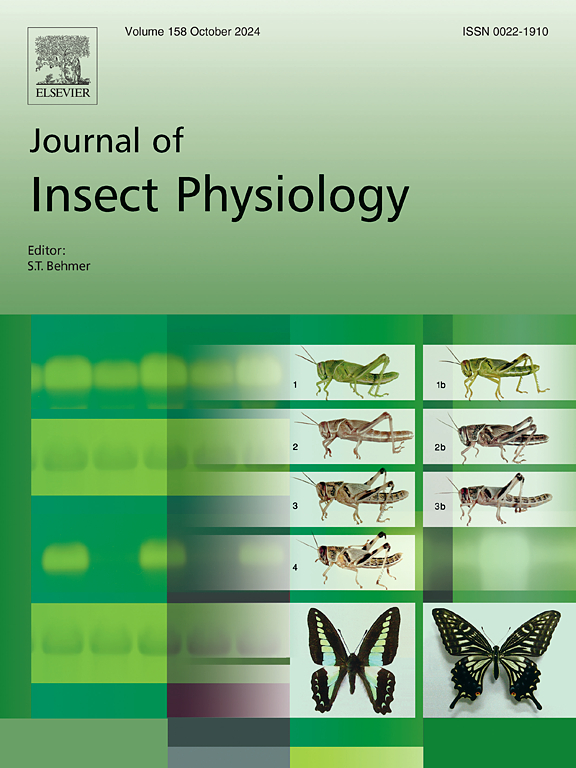紫外线辐射对蜘蛛影响的首次研究:生化分析。
IF 2.3
2区 农林科学
Q1 ENTOMOLOGY
引用次数: 0
摘要
紫外线辐射是影响所有生物的环境因素之一,可以造成各种类型的伤害。本研究首次评价了UV-B和UV-C辐射对黄斑Misumenops maculissparsus三个发育阶段(幼蛛J3、J4和成虫)的抗氧化反应、活性氧水平以及潜在的组织学和染色体损伤的影响。紫外线照射下,幼鱼抗氧化酶超氧化物歧化酶、过氧化氢酶和谷胱甘肽- s -转移酶表现出明显的抑制作用。在成人中,没有观察到酶活性的变化,但ROS水平增加,特别是在UV-C暴露下,并且流式细胞术分析了细胞群的变化。组织学分析显示,幼鱼的角质层下有大量的色素积累,成年鱼也有少量的色素积累,这可能是抵御紫外线辐射的天然屏障和抗氧化防御。细胞遗传学分析首次在该物种中发现二倍体染色体数目为2n = 23,并在紫外线照射的成虫中鉴定出染色质颗粒,提示紫外线辐射引起的染色质损伤。这些多学科的发现增强了我们对蜘蛛在不同发育阶段暴露于紫外线辐射时所采用的生理防御的理解。本文章由计算机程序翻译,如有差异,请以英文原文为准。

First study on the effect of UV radiation on spiders: biochemical analysis
Ultraviolet radiation is one of the environmental factors that impacts all living beings and can cause various types of damage. In this study, the effects of UV-B and UV-C radiation on the antioxidant response, reactive oxygen species levels, and potential histological and chromosomal damage were evaluated for the first time in the spider Misumenops maculissparsus at three developmental stages (juveniles J3, J4, and adults). Juveniles exhibited significant inhibition of the antioxidant enzymes superoxide dismutase, catalase, and glutathione-S-transferase under UV radiation exposure. In adults, no enzymatic activity changes were observed, but there were increases in ROS levels, particularly under UV-C exposure, and alterations in the cellular population analyzed by flow cytometry. Histological analysis revealed substantial pigment accumulation beneath the cuticle in juveniles and, to a lesser extent, in adults, which could serve as a natural barrier and antioxidant defense against UV radiation. Cytogenetic analysis determined for the first time in this species a diploid chromosome number of 2n = 23 and identified chromatin granules in UV radiation-exposed adults, suggesting UV radiation-induced chromatin damage. These multidisciplinary findings enhance our understanding of the physiological defenses that spiders employ when exposed to UV radiation at different developmental stages.
求助全文
通过发布文献求助,成功后即可免费获取论文全文。
去求助
来源期刊

Journal of insect physiology
生物-昆虫学
CiteScore
4.50
自引率
4.50%
发文量
77
审稿时长
57 days
期刊介绍:
All aspects of insect physiology are published in this journal which will also accept papers on the physiology of other arthropods, if the referees consider the work to be of general interest. The coverage includes endocrinology (in relation to moulting, reproduction and metabolism), pheromones, neurobiology (cellular, integrative and developmental), physiological pharmacology, nutrition (food selection, digestion and absorption), homeostasis, excretion, reproduction and behaviour. Papers covering functional genomics and molecular approaches to physiological problems will also be included. Communications on structure and applied entomology can be published if the subject matter has an explicit bearing on the physiology of arthropods. Review articles and novel method papers are also welcomed.
 求助内容:
求助内容: 应助结果提醒方式:
应助结果提醒方式:


